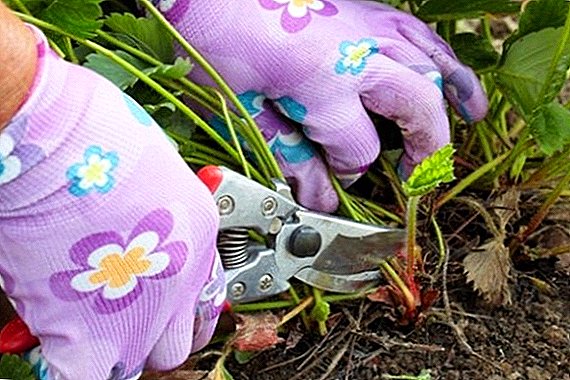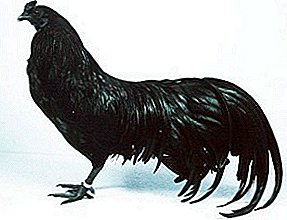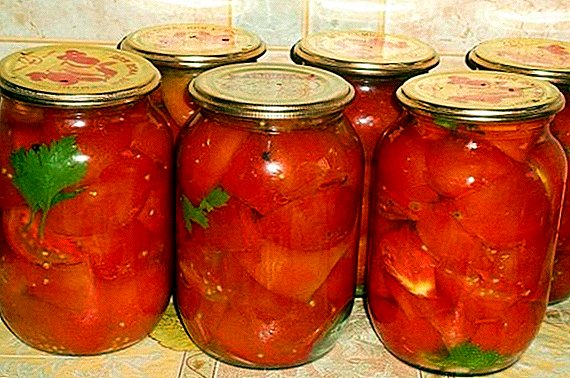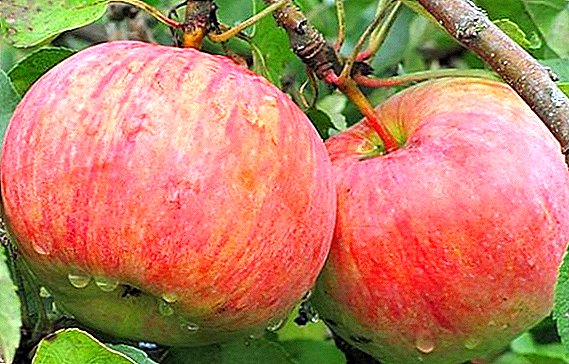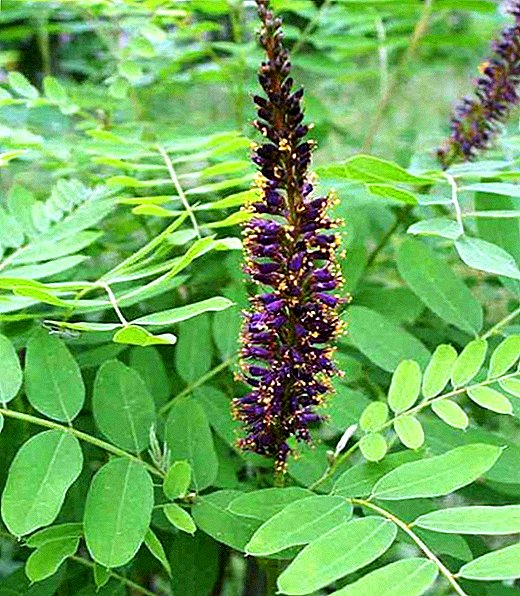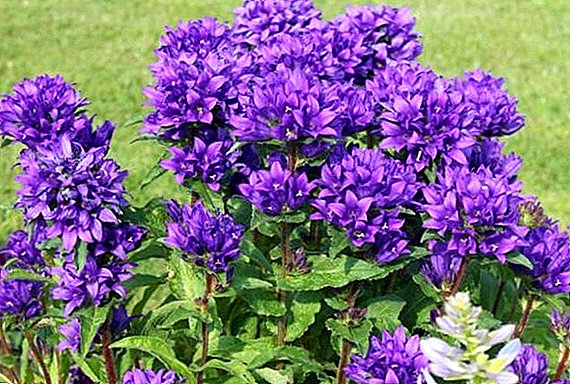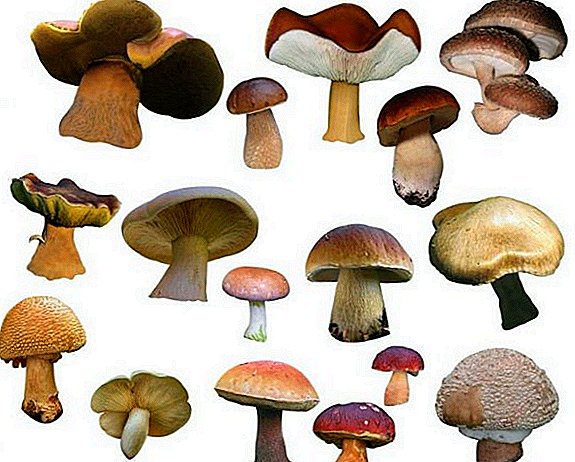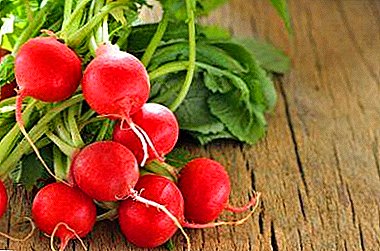
Everyone who cares about their health, trying to choose organic fruits and vegetables. But nothing compares to taste and benefit with self-grown. They do not contain any nitrates and are grown completely safe.
And it is not as difficult as it may seem at first glance. In this article, we will examine in great detail one of the easiest varieties of radish in growing - Duro Krasnodar. We will tell all about this variety starting with its appearance and breeding history and ending with all its advantages and disadvantages.
Characteristic and description
- the shape of a root vegetable resembles a ball with a diameter of 7 to 9 cm;
 thin peel of bright red color, tail light.
thin peel of bright red color, tail light.- the average weight of one root is 30-40 g;
- the average yield of a variety is 25-35 tons per hectare.
Feature grade - you can grow and harvest throughout the summer season. Variety Duro Krasnodar can be grown on open ground and in greenhouses or greenhouses.
This variety is not prone to most diseases, in particular, to tsvetushnosti and marksman, resistant to stalking, the formation of voids in the root and cracking.
- ripening period 3-4 weeks;
- the variety is unpretentious and grows well on various types of soil, regardless of their fertility;
- after harvest, the harvest can be stored in the refrigerator for about a month, maintaining its quality.
Breeding history
Himself radish brought to Russia from Amsterdam Peter I, and then the plant was subjected to selection and improvement. At the end of the XIX century, the Russian breeder E.A. Grachev created radish varieties for the harsh conditions of the North-West region.
After the death of the famous breeder, his son Vladimir continued working at the Grachevs breeding plant, which existed until 1918. Father and son laid the foundations that served as the basis for the subsequent work of Soviet breeders, where the Duro Krasnodar variety occupies a worthy place.
Today the grade is very widespread among gardeners.
Distinctive features
The considered variety is so popular because of the favorable differences from other varieties of radish:
- resistant to many diseases;
- can be grown and yield several times per season;
- unpretentious in the care that allows you to get a quality crop, even a beginner;
- pleasant taste, remaining regardless of the size of the root.
Advantages and disadvantages
Advantages:
- high yield;
 large root vegetables;
large root vegetables;- high taste qualities;
- resistance to bacterial diseases;
- harmonious fruiting;
- preservation of commercial qualities for a long time after collection;
- root crops are not prone to cracking.
Disadvantages:
- frequent weeding is necessary if the soil is heavy;
- on acid soils should be liming;
- frequent watering - with a lack of moisture radish will be bitter.
Application
Radish is a storehouse of vitamins and trace elementstherefore, it is actively used in healthy nutrition. Not all varieties can be used widely in cooking due to the specific bitter taste. But the Duro variety has a milder taste and does not taste bitter, so it can be consumed after heat treatment.
Most often you can see a root vegetable in vegetable salads or okroshka, less often as an ingredient that sets off meat. But also used tops, different juiciness in this class. It is added to cold and hot first courses.
Radish, cut with a metal knife, loses some of the useful properties, so it is better to use ceramic.
Seed cultivation
For sowing, it is better to choose a plot with light soil where snow melts before.
Radish predecessors cannot be crucifers, it is bad for the development of the plant.
You can start sowing from the end of April. Seeds are sown 4-5 cm from each other, and about 7 cm are left between rows, otherwise the plot will have a sloppy look. The optimum temperature is 16-20 degrees, but higher values will not have a significant impact on the crop, this explains the possibility of growing the Duro variety on the open field in summer.
It should be noted that when grown in a greenhouse, radish will ripen faster, but circulation of fresh air is necessary, otherwise the probability of infection with a black leg increases.
 Requires frequent watering as the land dries. On hot days, it is necessary to irrigate the plantings every day, but care should be taken: do not pour radishes after several days of drought and do not allow the underground part to rot.
Requires frequent watering as the land dries. On hot days, it is necessary to irrigate the plantings every day, but care should be taken: do not pour radishes after several days of drought and do not allow the underground part to rot.
On average, 10-12 liters of water are consumed per square meter. We must do weeding immediately after watering the radish., it should not touch the fragile roots of plants. Top dressing is carried out in the period of growth of radish.
To do this, it is better to use products with a small amount of nitrogen: superphosphate (15 g per square meter), ash (1 l per square meter), saltpeter (10 g per square meter). Manure as a fertilizer is not recommended. Thin out should be only when initially close planting seeds.
Harvesting and storage
Harvesting is recommended immediately after ripening.. If the root crop is overexposed in the ground, then it will lose its taste.
After removal, the harvest is well stored in the refrigerator for 3-4 weeks, it is impossible to freeze the radish.
Diseases and pests
- powdery mildew: spray with Bordeaux mixture;
- blackleg: spray the solution, per 1 liter of 2.5 g of copper sulfate 4 g of soap;
- kila: water with lime milk;
- root blackening: disinfect the soil with potassium permanganate and clean the area from diseased plants;
- vascular bacteriosis: Planriz drug handle landing.
Any disease is easier to prevent than to cure. Prevention measures: maintenance of crop rotation and disinfection of seeds with a weak solution of potassium permanganate before sowing.
Similar varieties
- Radish French breakfast (Unpretentious in the care and quickly matures (25 days)).
- Radish Sora. (Resistant to rifle, withstands hot summer in the open field. It is similar to Duro appearance).
Taking care of your health is not so difficult, and growing your own vegetables for human consumption is one of the small steps towards this good goal. I want to believe that the material of this article will help in this. Thanks for reading!


 thin peel of bright red color, tail light.
thin peel of bright red color, tail light. large root vegetables;
large root vegetables;